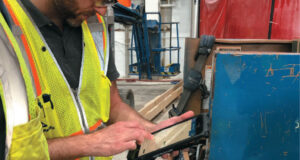As safety practices improve and accidents become rarer, organizations have fewer opportunities to learn from incidents. This reduced number of accidents is undoubtedly positive, but it also means that traditional safety management approaches based on learning from accidents are becoming less effective.
When something goes wrong, the natural assumption is that someone made a mistake or didn’t follow the rules, whereas when a job is successfully completed, it is presumed that all procedures were followed correctly and no mistakes were made. However, research suggests that work performed without incidents (normal work) is similar to work that resulted in incidents, with workers often facing similar challenges and constraints. These constraints may limit the available choices at the time, causing workers to adapt their decisions and behaviors accordingly.
For instance, crane operators may face various constraints while lifting a load, such as limited time, additional people in the area, or missing lifting slings; they will adapt by skipping steps, taking a different path, or using different slings, respectively. Learning from Normal Work (LFNW) means listening to people doing the job about the constraints and challenges they are facing rather than coaching, telling, explaining, or correcting their behavior.
LFNW provides a wealth of information about how work processes function daily and how employees interact with potential hazards[1]. By studying normal work, organizations can identify areas of vulnerability, improve existing safety practices, and proactively prevent accidents. LFNW serves as a supplement to various risk management approaches, addressing aspects of risk that other methods often overlook, including complex design, causes of potential miscommunication, or other easy to overlook constraints and operational dilemmas. Implementing LFNW can also enhance efficiency, reduce non-productive time, improve customer-contractor interfaces, and bring about several other benefits to the workplace.
HAZARDS VS. ERROR TRAPS
It’s crucial to differentiate between hazards, which are potential sources of harm, and constraints, which are circumstances or factors that influence human performance and can lead to accidents. Identifying and controlling hazards—i.e., objects or energies with the potential to cause harm, such as chemical agents, electricity, pressure, etc.—are the foundations of risk management.
Constraints such as out-of-date procedures, worn out identification tags on equipment, or incorrect tools provided for the job, are not hazards; they are not controlled, but contribute to risk and incidents.
PRACTICAL TOOLS
Various tools can be used to learn from normal work, such as Walk-Through/Talk-Through (WT/TT), where employees go through a job step-by-step and discuss constraints for each one; or Learning Teams, which is a conversation with a group of people doing the work about the challenges they must deal with and overcome on a regular basis. Combining WT/TT and Learning Teams can help solve complex problems by leveraging both methods’ strengths.
IMPLEMENTING LFNW
To implement LFNW, begin with the leadership team and move down to the site level, ensuring adoption, alignment, and ownership at every step. Implementation can be divided into three stages:
- Foundations and alignment: Use internal presentations, webinars, and a strategic executive leadership workshop to familiarize stakeholders with the concept and create a strategic plan.
- Early implementation at the site level: Upskill facilitators and apply tools such as learning teams and WT/TTs.
- Integration with company processes such as incident investigations, risk assessment, procedure reviews, leadership conversations, etc.
As the number of accidents decreases, organizations can transition to LFNW to build insight into where and how the next accident can happen. Many of the FTSE 100 organizations operating in high-hazard industries are currently implementing LFNW to get ahead of failure and learn from how the work is done in reality, rather than concluding it was not done as prescribed after something goes wrong. Learning from Normal Work is Human and Organizational Performance (HOP) operationalized for corporate implementation.
To learn more about LFNW and see case studies and examples, visit: www.learningfromnormalwork.com.
 Paper 360
Paper 360

